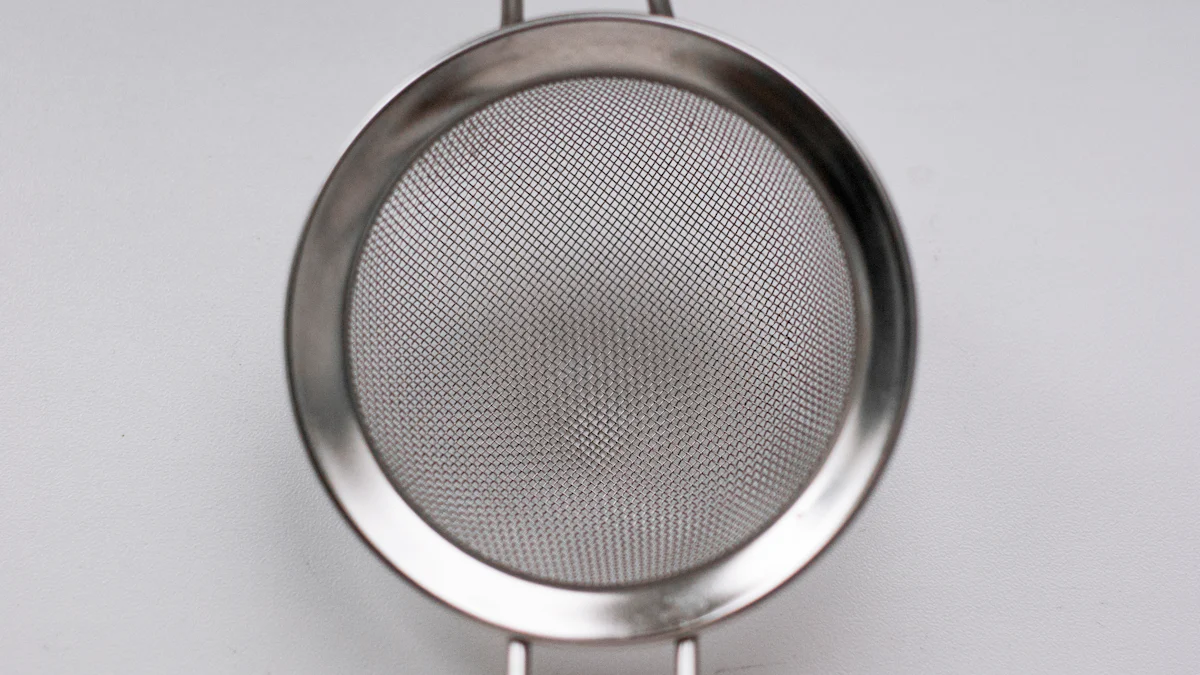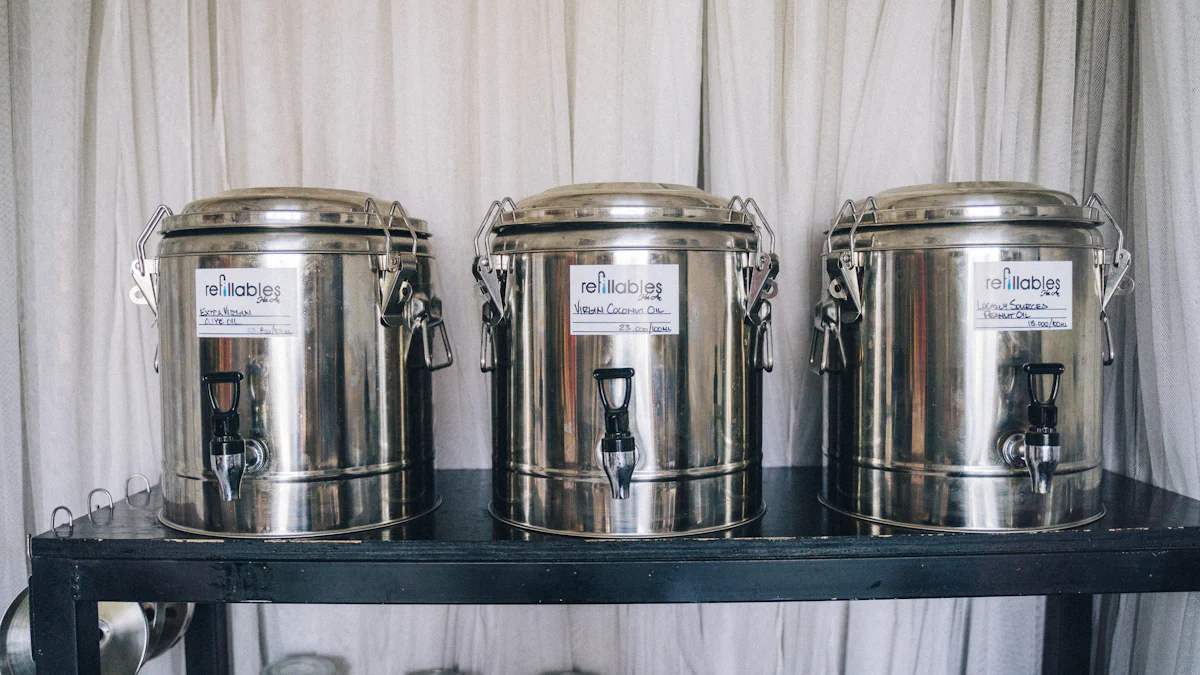Understanding magnetic stainless steel grades is crucial for selecting the right material for specific applications. These grades, defined by their crystal structures, determine whether stainless steel is magnetic or not. For instance, martensitic and ferritic structures exhibit magnetic properties, while austenitic structures do not. This distinction plays a significant role in industries where magnetic properties are essential, such as electronics and magnetic separators. By referring to a magnetic stainless steel grades chart, I can make informed decisions that align with the technical requirements and economic considerations of my projects.
Key Takeaways
- Magnetic properties of stainless steel depend on its crystal structure; martensitic and ferritic grades are magnetic, while austenitic grades are not.
- Referencing a magnetic stainless steel grades chart helps in selecting the right grade based on specific application needs and environmental conditions.
- Grade 430 is ideal for indoor applications due to its excellent corrosion resistance and aesthetic appeal, while Grade 439 is better suited for outdoor use due to its superior durability.
- Cost considerations are crucial; while Grade 409 is cost-effective, investing in Grade 439 may offer better long-term value due to its enhanced corrosion resistance.
- Consulting with industry experts and conducting testing or prototyping can provide valuable insights for selecting the most suitable stainless steel grade for your projects.
- Understanding the grading systems, such as AISI and SAE, allows for easier identification of stainless steel grades that meet technical and economic requirements.
Understanding Magnetic Stainless Steel
What Makes Stainless Steel Magnetic?
Understanding the magnetic properties of stainless steel requires a look into its composition and structure. The presence of iron in stainless steel contributes significantly to its magnetism. However, not all stainless steels exhibit magnetic properties. The crystal structure plays a pivotal role in determining whether a stainless steel grade is magnetic or not.
Composition and Structure
The composition of stainless steel involves a mix of iron, chromium, and other elements. The arrangement of these atoms forms different crystal structures, which influence the material’s magnetic behavior. Ferritic and martensitic stainless steels, known for their body-centered cubic (BCC) structures, tend to be magnetic. This structure allows the alignment of magnetic domains, making these grades attractive to magnets. In contrast, austenitic stainless steels possess a face-centered cubic (FCC) structure, which disrupts this alignment, rendering them non-magnetic.
Role of Ferritic and Martensitic Stainless Steels
Ferritic stainless steels, such as grade 430, are inherently magnetic due to their BCC crystal structure. This property makes them suitable for applications in electronic devices and magnetic sensing components. Martensitic stainless steels, including grades like 410 and 440, also exhibit magnetic characteristics. Their unique crystal structure, which contains iron, enhances their magnetic properties. These grades find use in applications where both strength and magnetism are required.
Overview of Stainless Steel Grading Systems
The grading systems for stainless steel provide a standardized way to identify and categorize different grades based on their composition and properties. Understanding these systems helps in selecting the appropriate grade for specific applications.
AISI and SAE Standards
The American Iron and Steel Institute (AISI) and the Society of Automotive Engineers (SAE) have developed widely recognized standards for stainless steel grades. These standards classify stainless steels based on their chemical composition and mechanical properties. For instance, the 400 series, which includes ferritic and martensitic grades, is known for its magnetic properties. By referring to these standards, I can easily identify the magnetic stainless steel grades chart that aligns with my project needs.
Other International Standards
Apart from AISI and SAE, other international standards also exist, such as the European EN standards and the Japanese JIS standards. These standards provide additional classifications and specifications for stainless steel grades. They ensure that I can find the right grade regardless of geographical location or industry requirements. Understanding these standards broadens my options and helps me make informed decisions when selecting materials.
Detailed Look at Magnetic Stainless Steel Grades

Common Magnetic Grades
Understanding the specific grades of magnetic stainless steel helps me make informed decisions for various applications. Here are some common magnetic grades:
Grade 409
Grade 409 Stainless Steel stands out for its good corrosion resistance and high-temperature oxidation resistance. It contains less chromium, making it a cost-effective option. I often find this grade in automotive exhaust systems and other industrial applications where durability and affordability are key.
Grade 430
Grade 430 Stainless Steel belongs to the category of soft magnetic stainless steel. It primarily consists of iron, carbon, chromium, and other trace elements. This composition gives it excellent corrosion resistance, heat resistance, and mechanical properties. Its relatively high magnetic permeability makes it suitable for applications in the electromagnetic field. I consider this grade when I need a balance between magnetic properties and corrosion resistance.
Grade 439
Grade 439 Stainless Steel offers enhanced corrosion resistance compared to Grade 409. It is often used in environments where exposure to corrosive elements is a concern. This grade provides a good combination of formability and weldability, making it a versatile choice for various industrial applications.
Properties of Each Grade
When selecting a magnetic stainless steel grade, I evaluate several key properties:
Corrosion Resistance
Corrosion resistance varies among grades. Grade 430 exhibits excellent resistance, making it ideal for environments exposed to moisture and chemicals. Grade 409 offers moderate resistance, suitable for less demanding conditions. Grade 439 provides superior resistance, especially in more corrosive environments.
Mechanical Properties
Mechanical properties such as strength and ductility differ across grades. Grade 430 offers a good balance of strength and flexibility, while Grade 409 provides adequate strength for many applications. Grade 439 excels in environments requiring both strength and formability.
Thermal Conductivity
Thermal conductivity is crucial in applications involving heat. Grade 430 and Grade 439 offer good thermal conductivity, making them suitable for heat exchangers and similar applications. Grade 409 also performs well in high-temperature settings, such as automotive exhaust systems.
Applications of Magnetic Stainless Steel
Magnetic stainless steel grades find use in various industries due to their unique properties:
Automotive Industry
In the automotive industry, I often use Grade 409 for exhaust systems due to its high-temperature resistance and cost-effectiveness. Grade 430 is also popular for trim and molding applications, thanks to its aesthetic appeal and corrosion resistance.
Home Appliances
For home appliances, Grade 430 is a common choice. Its excellent corrosion resistance and magnetic properties make it ideal for components like refrigerator doors and washing machine drums.
Industrial Equipment
In industrial settings, Grade 439 is favored for its superior corrosion resistance and formability. It is often used in equipment exposed to harsh environments, ensuring longevity and reliability.
By referring to a magnetic stainless steel grades chart, I can select the appropriate grade that aligns with the specific requirements of my projects, ensuring both technical performance and economic efficiency.
Comparing Magnetic Stainless Steel Grades

Performance in Different Environments
When I choose magnetic stainless steel grades, I must consider how they perform in various environments. Each grade has unique characteristics that make it suitable for specific conditions.
Indoor vs. Outdoor Use
For indoor applications, I often select Grade 430 due to its excellent corrosion resistance and aesthetic appeal. It performs well in environments where exposure to moisture and chemicals is minimal. However, when I need a grade for outdoor use, Grade 439 becomes my preferred choice. Its superior corrosion resistance makes it ideal for environments exposed to harsh weather conditions. The ability of Grade 439 to withstand corrosive elements ensures longevity and reliability in outdoor settings.
High-Temperature Applications
In high-temperature applications, I rely on Grade 409. Its high-temperature oxidation resistance makes it suitable for automotive exhaust systems and other industrial applications. This grade maintains its structural integrity even under extreme heat, ensuring durability and performance. Grade 430 also offers good thermal conductivity, making it a viable option for heat exchangers and similar applications. By understanding the thermal properties of each grade, I can make informed decisions that align with the specific requirements of my projects.
Cost Considerations
Cost plays a significant role in my decision-making process when selecting magnetic stainless steel grades. I must weigh the initial cost against the long-term value and maintenance requirements.
Initial Cost vs. Long-term Value
Grade 409 stands out as a cost-effective option due to its lower chromium content. Its affordability makes it an attractive choice for applications where budget constraints are a concern. However, I must also consider the long-term value. While Grade 409 offers moderate corrosion resistance, Grade 439 provides superior protection against corrosive elements. Investing in Grade 439 may result in higher initial costs, but its enhanced durability and longevity can lead to cost savings over time.
Maintenance and Durability
Maintenance requirements vary among different grades. Grade 430 requires minimal maintenance due to its excellent corrosion resistance, making it a popular choice for home appliances and indoor applications. In contrast, Grade 409 may require more frequent maintenance in environments with higher exposure to corrosive elements. By evaluating the maintenance needs and durability of each grade, I can select the most suitable option that aligns with both technical performance and economic efficiency.
By referring to a magnetic stainless steel grades chart, I can effectively compare the performance, cost, and maintenance requirements of different grades. This comprehensive understanding allows me to make informed decisions that meet the specific needs of my projects.
Choosing the Right Magnetic Stainless Steel Grade
Selecting the appropriate magnetic stainless steel grade requires careful consideration of various factors. I must ensure that the chosen grade aligns with the specific needs of my project and the conditions it will face.
Factors to Consider
Specific Application Needs
Understanding the specific requirements of my application is crucial. Each project has unique demands, whether it involves strength, corrosion resistance, or magnetic properties. For instance, if I need a grade for automotive exhaust systems, I might opt for Grade 409 due to its high-temperature resistance. Conversely, for home appliances, Grade 430 could be more suitable because of its excellent corrosion resistance and aesthetic appeal. By identifying the primary needs of my application, I can narrow down the options on the magnetic stainless steel grades chart.
Environmental Conditions
The environment in which the stainless steel will operate plays a significant role in my decision-making process. Indoor applications might not require the same level of corrosion resistance as outdoor ones. For outdoor use, I often consider Grade 439, known for its superior resistance to harsh weather conditions. In contrast, indoor applications might benefit from the cost-effectiveness and adequate performance of Grade 430. Evaluating environmental conditions helps me choose a grade that ensures longevity and reliability.
Practical Tips for Selection
Consulting with Experts
Engaging with industry experts provides valuable insights into selecting the right stainless steel grade. These professionals possess extensive knowledge about the properties and performance of different grades. By consulting with them, I gain a deeper understanding of how each grade performs in various applications. Their expertise guides me in making informed decisions that align with both technical and economic considerations.
Testing and Prototyping
Testing and prototyping offer practical ways to assess the suitability of a stainless steel grade for my project. By creating prototypes, I can evaluate how the material performs under real-world conditions. This hands-on approach allows me to identify any potential issues and make necessary adjustments before full-scale production. Testing ensures that the chosen grade meets all the requirements and performs as expected.
By considering these factors and following practical tips, I can confidently select the right magnetic stainless steel grade for my projects. The magnetic stainless steel grades chart serves as a valuable tool in this process, helping me make choices that ensure both technical excellence and economic efficiency.
Understanding the nuances of magnetic stainless steel grades is vital for ensuring optimal performance in various applications. By referring to a magnetic stainless steel grades chart, I can make informed decisions that align with both technical and economic needs. When selecting the appropriate grade, I consider factors such as magnetism, corrosion resistance, and mechanical properties. This approach ensures that I choose the right material for the job, enhancing both safety and longevity. By considering these elements, I can confidently navigate the complexities of stainless steel selection, ensuring my projects meet their intended goals.
FAQ
What grade of stainless steel is magnetic?
Some stainless steel grades exhibit partial magnetism. For instance, grade 310, an austenitic stainless steel, can become slightly magnetic due to post-manufacturing processes like cold rolling. This characteristic often applies to stainless steel kitchen knives, which may show partial magnetism.
Is stainless steel magnetic or not?
Stainless steel’s magnetism depends on its crystal structure. If the steel has a martensite or ferrite structure, it will be magnetic. However, if it possesses an austenite structure, it will not exhibit magnetic properties.
Why do some stainless steels lose their magnetism?
Certain stainless steels may lose magnetism due to changes in their crystal structure. Processes like annealing can alter the structure, reducing magnetic properties. Understanding these changes helps in selecting the right grade for specific applications.
How can I test if stainless steel is magnetic?
To test stainless steel’s magnetism, I use a simple magnet. If the magnet sticks, the steel is likely ferritic or martensitic. If it does not, the steel is probably austenitic. This quick test aids in identifying the steel’s type.
Are all kitchen appliances made from magnetic stainless steel?
Not all kitchen appliances use magnetic stainless steel. Many appliances feature austenitic stainless steel, which is non-magnetic. However, some components may use ferritic or martensitic grades for specific applications requiring magnetism.
Can magnetic stainless steel rust?
Magnetic stainless steels, like ferritic and martensitic grades, can rust under certain conditions. Their corrosion resistance varies, so understanding the environment and application is crucial for preventing rust.
What are the benefits of using magnetic stainless steel?
Magnetic stainless steel offers several benefits. It provides strength and durability, making it suitable for various industrial applications. Its magnetic properties also make it ideal for use in electronic devices and magnetic sensing components.
How does the composition of stainless steel affect its magnetism?
The composition, particularly the presence of iron, chromium, and nickel, influences stainless steel’s magnetism. Ferritic and martensitic grades, with higher iron content, tend to be magnetic. In contrast, austenitic grades, with more nickel, are typically non-magnetic.
Can I use magnetic stainless steel in high-temperature applications?
Yes, certain magnetic stainless steels, like grade 409, perform well in high-temperature applications. Their high-temperature oxidation resistance makes them suitable for automotive exhaust systems and similar environments.
How do I choose the right magnetic stainless steel grade for my project?
Choosing the right grade involves considering specific application needs, environmental conditions, and cost. Consulting with experts and testing prototypes can provide valuable insights, ensuring the selected grade meets all technical and economic requirements.

